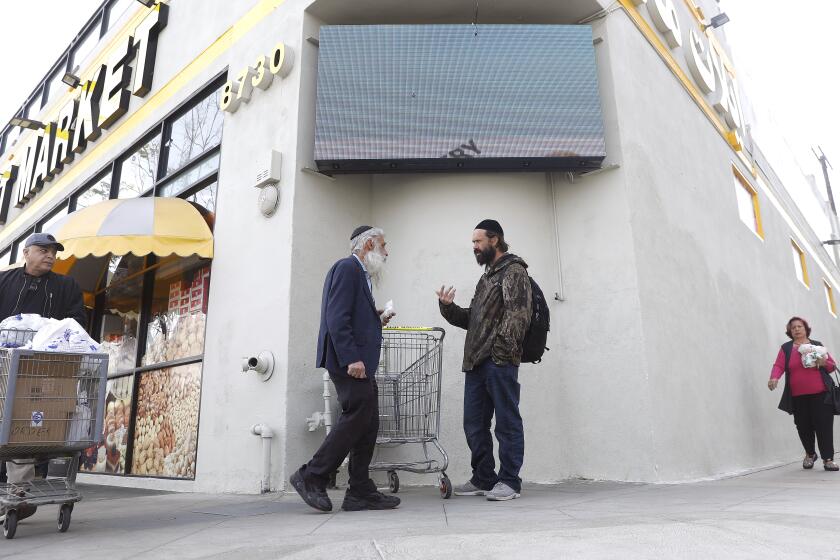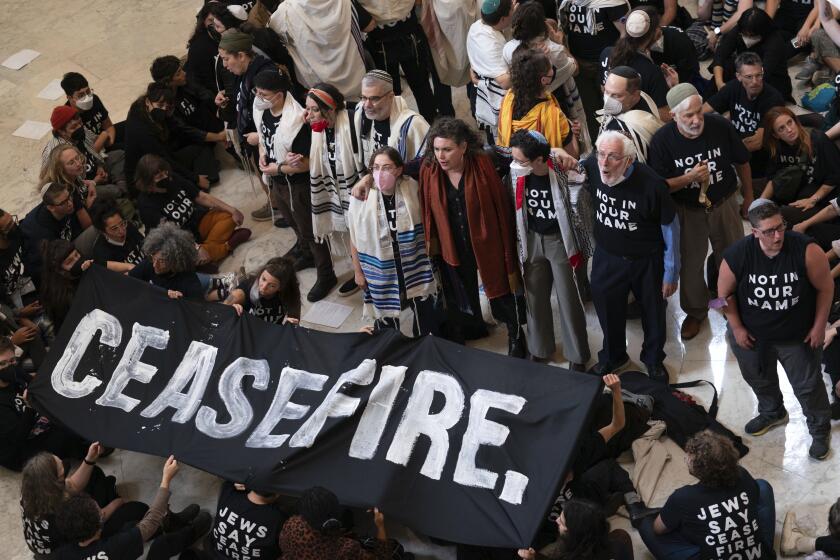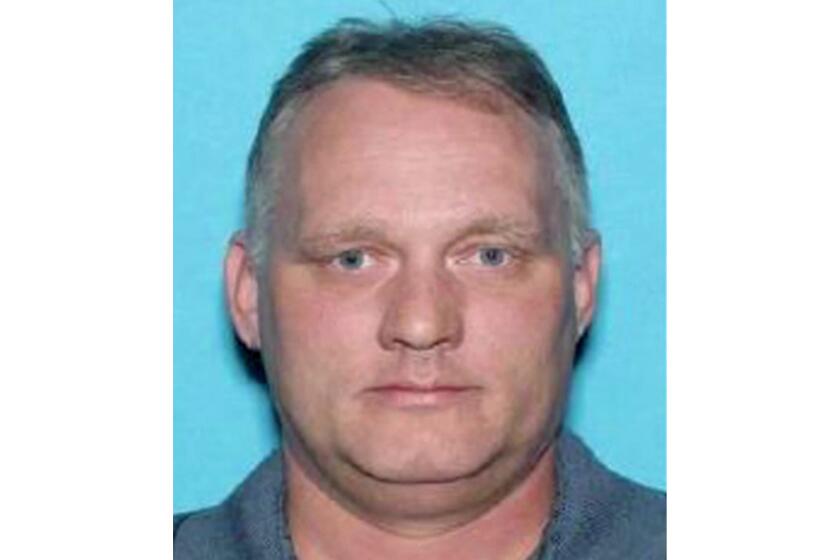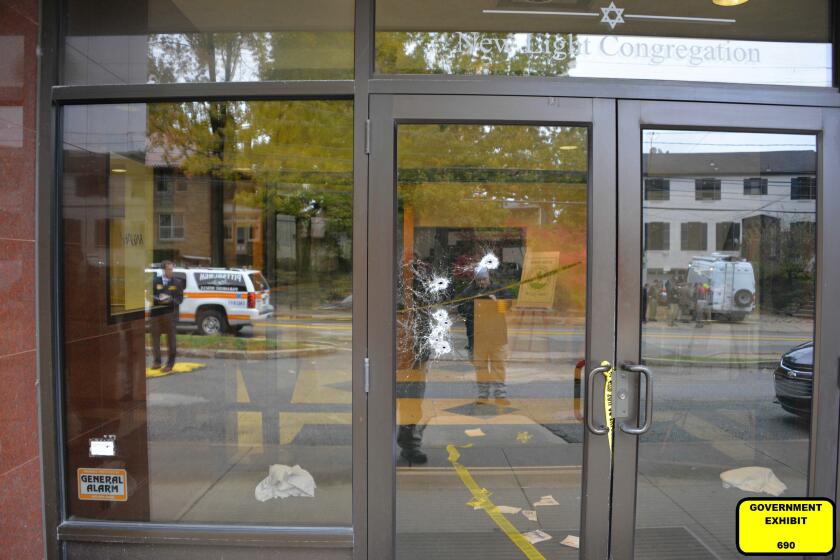After a long dialogue, families of Pittsburgh synagogue attack unveil a memorial design
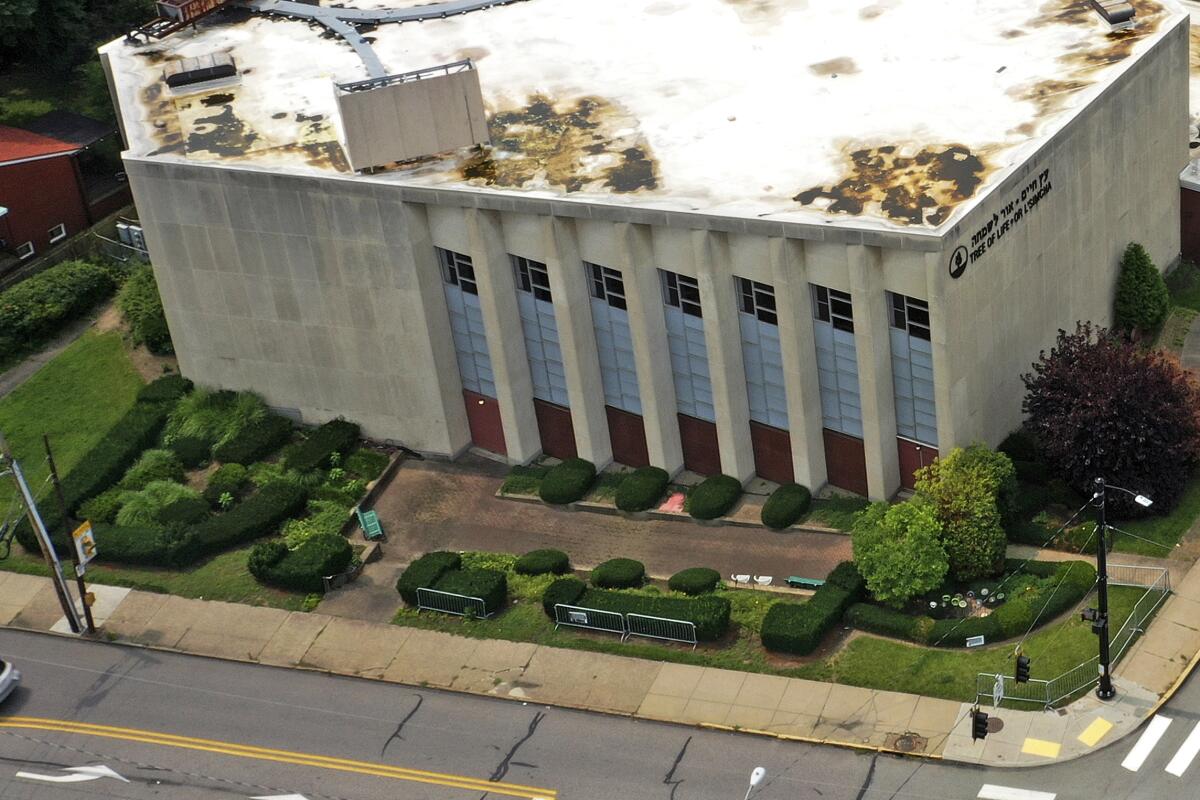
- Share via
PITTSBURGH — In the years following the deadly 2018 Pittsburgh synagogue attack, relatives of those slain have gone through their own private grief, public memorial services and the trial and death sentence of the perpetrator. They’ve also been deliberating, slowly and methodically, on what kind of permanent memorial should be built to honor their loved ones.
They sought counsel from people who had experienced similar, wrenching processes — whether in post-9/11 New York or cities that suffered their own mass shootings.
And they visited the Flight 93 National Memorial near Shanksville, Pa., about 70 miles from Pittsburgh, which marks another terror attack.
It’s been an effort that a growing number of American communities have faced — how to memorialize the victims of a senseless, hate-filled act of violence.
For those who lost relatives in the Pittsburgh attack, it was also a unique exercise. They sought a way to honor the simple, devout lives of 11 individuals from three congregations who were killed at the Tree of Life synagogue on the Sabbath morning of Oct. 27, 2018.
At the same time, relatives knew they were commemorating an event with wide resonance among American Jews, who felt the shock waves of the deadliest antisemitic attack in U.S. history.
Anti-Jewish incidents hit a record high in U.S. and California in 2022, the Anti-Defamation League says. Some harassers referenced Ye’s antisemitic remarks.
That work is bearing its first public outcome with Thursday’s unveiling of preliminary designs for an outdoor memorial located adjacent to the Tree of Life synagogue.
In the design, a walkway leads visitors into a garden memorial with 11 sculpted forms of open books, each representing one of the victims.
These represent the “Book of Life,” where, according to Jewish tradition, the righteous are named.
“To be inscribed in the Book of Life is to be inscribed in eternity, to be inscribed in memory,” said architect Daniel Libeskind, who met regularly with the group. His Studio Libeskind of New York is designing the memorial along with the redesign of the adjacent synagogue.
“It’s not a cemetery. It has to be an affirmation of life,” he said.
The family members began discussing the memorial three years ago in pandemic-era Zoom sessions. They were joined by representatives of the three congregations — Dor Hadash, New Light and Tree of Life — and the 10.27 Healing Partnership, formed to help those affected by the attack. But the ultimate deciders were the families.
Participants in the Memorialization Working Group heeded the advice of those who had endured other mass tragedies:
‘Our human ask is that people give a damn when we die,’ said one rabbi. Amid the Israel-Hamas war, many U.S. Jews feel betrayed by people they thought were allies.
Take time. Get to know one another. Talk about the meaning you’d like the project to convey. Brace for emotionally bruising conversations.
They chose to go by consensus.
“It was a hard process because each of us was in their own place,” said Diane Rosenthal, who lost two brothers, Cecil and David Rosenthal, in the 2018 attack,
Some surviving relatives grieved differently than others. Ideas varied about the size of a memorial and where to put it.
But Rosenthal said they agreed on this: “We wanted a memorial that was going to focus not solely on how they died, but how they lived.”
The challenges are inherent in any memorial design with multiple stakeholders — witness the debates that accompanied the once-controversial, now widely revered Vietnam Veterans Memorial in Washington, dedicated in 1982.
Monuments to terror attacks and mass shootings typically take years of planning — and they need to, so that all stakeholders can be heard in a transparent process, said Clifford Chanin, executive vice president and director of the 9/11 Memorial & Museum in New York.
Once again, the Southern Poverty Law Center is taking aim at neo-Nazis — this time in a rare lawsuit accusing an online publisher of urging anonymous Internet trolls to unleash a torrent of anti-Semitic slurs and harassment against a Jewish real estate agent in Montana.
“Nobody who finds themself in this situation, the death of the loved one in a terrorist attack, nobody has a plan for what they’re going to do and what’s going to be important in the aftermath of that loss,” Chanin said. “All of a sudden, it becomes a critical thing for them to consider: How do they want their loved one to be remembered? How much do they want to share with the public? How is all that decided?”
Details for the Pittsburgh memorial remain to be decided, such as the selection of materials and the wording of interpretive signs. Several family members said they were satisfied with the design and the long process leading to it.
“Over the years, it was a struggle, and it came to the point where we’re in a better place,” said Sharyn Stein, who lost her husband, Daniel Stein.
The group, with help from conflict and organizational consultant Selina Shultz, spent months getting acquainted before even discussing a design. Members crafted a mission statement with goals of honoring their loved ones and raising awareness of antisemitism.
Anthony Fienberg, whose mother, Joyce Fienberg, was killed in the attack, said participants recognized a need to plan a memorial that would be comprehensible to visitors not yet born when the attack happened.
“We’re building something that’s supposed to last throughout the generations,” he said.
Jury recommends death sentence for the gunman who killed 11 in attack on Pittsburgh synagogue, the nation’s deadliest attack on Jews.
The attack — on Jews at worship, in a land where they have long felt at home — has been seen as emblematic of reports of rising antisemitism that began years before the latest wave since the start of the Israel-Hamas war.
Yet participants say the best way to represent the attack’s wider significance is to honor 11 specific lives.
“They go hand in hand without us having to explain it, because these people were at the synagogue at the time of the shooting, and that’s just who they were,” said Amy Mallinger, whose grandmother, Rose Mallinger, was killed at age 97.
The modest memorial design fits those it honors, she added: “They were all very simple people. None of them were extravagant. They all went to synagogue on Saturdays.”
Several participants said they bonded more strongly during this year’s lengthy federal trial of the gunman, who was convicted and sentenced to death. Testimony and victim-impact statements from family members painted richer portraits of the victims.
Central to the group’s deliberations was a 2021 visit to the Flight 93 National Memorial near Shanksville. On a clear summer day, they went to the walkway marking the flight path traveled in the final moments of the plane that crashed during the Sept. 11, 2001, terror attacks. They viewed the memorials to the 40 passengers and crew who fought back against their attackers, sparing further carnage in the hijackers’ likely target of Washington, D.C.
A gunman who killed 11 worshipers at a Pittsburgh synagogue ranted incessantly on social media about his hatred of Jews before the 2018 attack.
“A lot of people were very emotionally touched by being on the same spot,” said Amy Mallinger. Family members had been deliberating whether to place their memorial at the synagogue or another site. The Shanksville visit “really inspired people to have the memorial at the Tree of Life because of the feelings that they received when they were at that site.”
The meeting was “overwhelmingly emotional,” agreed Gordon Felt, former president of Families of Flight 93, who spoke with the group for hours during the visit. Felt lost his brother, Edward Felt, in the crash.
“Our communities unfortunately have experienced violent loss by extremists,” Gordon Felt said. “It’s a story that’s becoming all too frequent, all too common.”
A cost estimate for the Pittsburgh memorial hasn’t yet been fixed. Fundraising, as well as long-term maintenance of the memorial, will be conducted by the recently formed Tree of Life organization — distinct from the congregation — which is also overseeing the building’s reconstruction.
Plans for the synagogue include preserving parts of the existing structure, with demolition of other portions expected to begin soon. Designs for the new building call for spaces for worship, community activities, a museum and programming about antisemitism.
Even as the Pittsburgh project moves forward, participants find themselves helping others in similar situations.
Maggie Feinstein, executive director of the 10.27 Healing Partnership, said she’s working with participants of resiliency centers in other traumatized communities. Despite similarities in their experiences, she said, “no two have been the same.”
More to Read
Sign up for Essential California
The most important California stories and recommendations in your inbox every morning.
You may occasionally receive promotional content from the Los Angeles Times.
